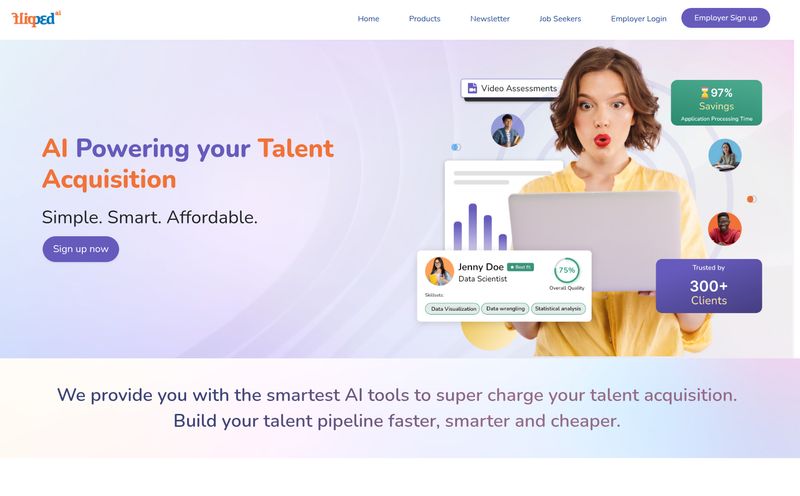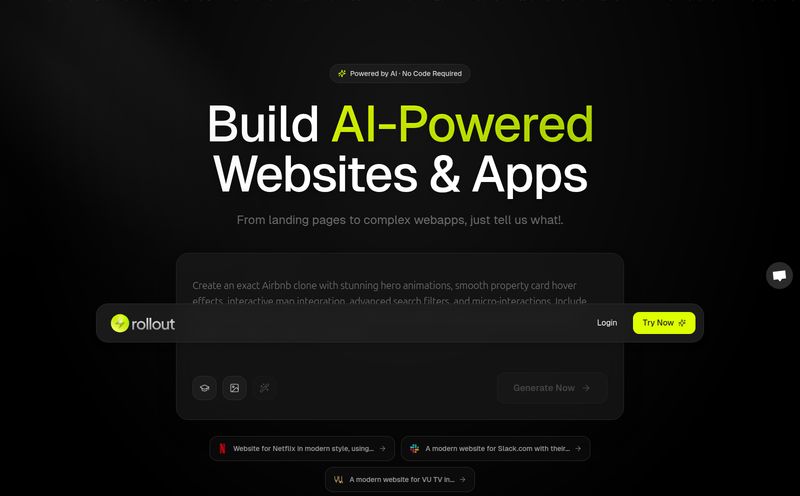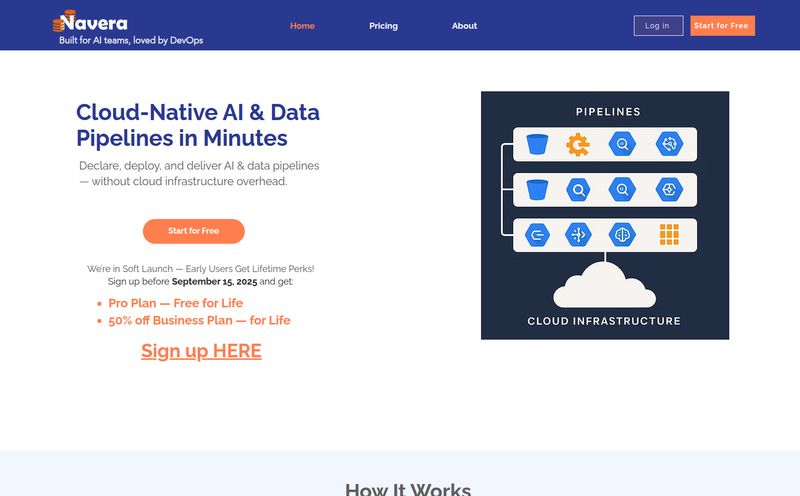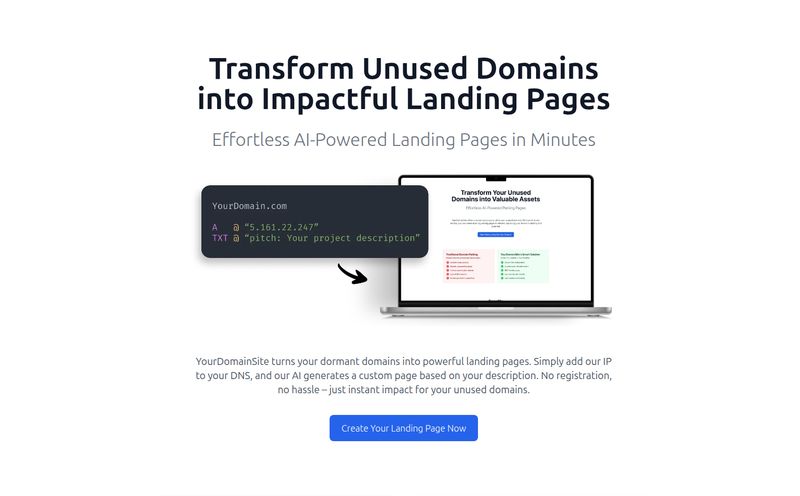For all our talk of serverless architecture, microservices, and fancy new frameworks, a huge chunk of the world’s critical business logic still lives inside… a spreadsheet. Yep. That unassuming grid of cells, formulas, and pivot tables. I can’t count the number of projects I’ve been on where the real engine behind a complex financial model or inventory system was an Excel file jealously guarded by the finance department.
It’s the blessing and curse of the modern tech world. Spreadsheets are universal, powerful, and accessible to non-developers. But getting that logic out of the spreadsheet and into a modern, scalable application? That's usually a nightmare of manual recoding, painful maintenance, and endless version control issues. So when I heard about a platform called GRID that promised to turn spreadsheets directly into APIs, my ears perked up. Could this be the bridge we’ve all been waiting for?
Full disclosure: when I first tried to navigate to a specific page on their site to dig deeper, I was greeted with a friendly "Oops, that's a 404...". A real, human moment that I appreciate. It reminds me that even the most sophisticated tech companies are run by people, and sometimes, links break. It didn't stop me, though. I dug in anyway.
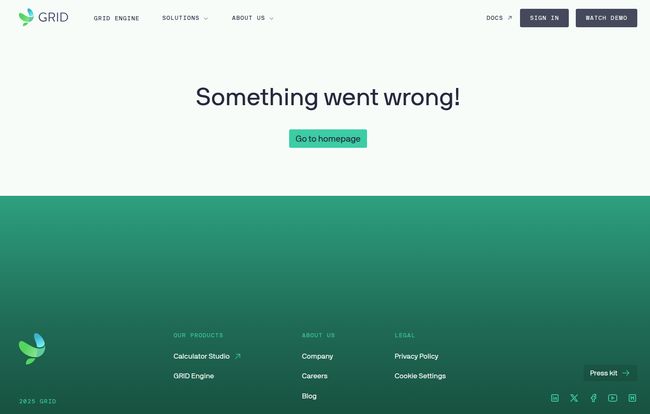
Visit GRID
So, What's the Big Deal About GRID?
At its core, GRID does one thing, and it aims to do it exceptionally well: it turns your spreadsheets into fast, scalable RESTful APIs. Think of it as a universal translator for your spreadsheet's brain. You keep your complex models, your intricate formulas, your years of business logic right where they are—in an Excel or Google Sheets file. Then, GRID wraps it in a neat, modern API that your applications can talk to.
Their tagline is pretty bold: "Spreadsheets run the world and we run spreadsheets." I gotta say, I love the confidence. For decades, developers have had two bad options: either try to replicate spreadsheet logic in code (a painful and error-prone process) or just… not integrate it at all. GRID proposes a third way. A way that respects the spreadsheet as the source of truth while freeing its logic to be used in more dynamic and powerful ways.
The Magic Under the Hood: Key GRID Features
It's not just about a simple data dump. The way GRID handles this conversion is where things get interesting.
From Cells to API Calls
This is the main event. GRID’s engine is fully compatible with both Microsoft Excel and Google Sheets. You can take a gnarly, hundred-tab workbook with VLOOKUPs, custom functions and conditional formatting, and expose it through an API endpoint. Your app can then send data to the API (e.g., input variables for a calculator) and get a result back, all calculated by the original spreadsheet in real-time. This decouples your business logic from your application code, which is a massive win for maintainability. When the finance team needs to update the commission rates, they just update the spreadsheet. No developers needed, no code to redeploy. That's agility.
The AI-Ready Advantage
This is what really caught my eye. We're in the middle of an AI gold rush, and everyone's trying to connect Large Language Models (LLMs) to reliable data sources. The problem is, AIs don't inherently understand that `Cell B2` is "Annual Revenue" and that the table in `F10:J25` is the "Q4 Sales Forecast."
GRID tackles this head-on by enriching cells with language data. It analyzes labels and context within your sheet, effectively giving your data semantic meaning. This allows an AI to interact with the spreadsheet more naturally. It can ask for the 'total profit for the western region' instead of needing a developer to hard-code a query for `SUM(G15:G22)`. It’s a subtle but profound shift, turning the spreadsheet from a dumb grid of numbers into a structured, queryable knowledge base. This is the kind of plumbing thats going to power the next generation of AI-driven business tools.
My Experience and Honest Thoughts on GRID
Alright, let's get down to it. Is this tool the silver bullet it claims to be? Like any tool, it's got its brilliant sides and its, well, less-brilliant ones.
"I’ve always felt the gap between the business folks in their spreadsheets and the developers in their code editors is one of the biggest friction points in any company. Tools that bridge this gap are worth their weight in gold."
The Good Stuff
The core value proposition is just… chef's kiss. The ability to keep incredibly complex, business-validated models in their native format while integrating them into modern tech stacks is a game-changer. I’m thinking of insurance premium calculators, real estate investment models, sales commission tools—all those beasts that are too complex to easily rewrite but too critical to ignore. GRID makes them first-class citizens in your architecture.
The scalability of a RESTful API is another huge plus. Your spreadsheet might crash if ten people are in it at once, but an API built on top of it can handle thousands of concurrent requests. It's the best of both worlds.
The Potential Hurdles
Now, for the reality check. The first thing to know is that this isn't exactly a 'no-code' tool for the marketing intern. The website's own documentation mentions it may require some technical knowledge to set up the APIs. And that makes sense. You're dealing with APIs, authentication, and data structures. It’s designed for developers or at least technically-inclined teams who understand how to integrate services.
And then there's the pricing. Or, the lack thereof. There's no pricing page on their site, which is a classic sign of an enterprise-focused, "contact us for a demo" sales model. This isn't necessarily a bad thing—it means the price is likely tailored to your usage—but it's a barrier for smaller teams or developers who just want to kick the tires and see what it costs. Its a personal pet peeve of mine, but a common one in the B2B SaaS space.
Who Is This Tool Actually For?
After digging in, I have a pretty clear picture of the ideal GRID customer.
- Developers & Engineering Teams: Anyone tasked with building an application that relies on logic currently locked in an Excel file.
- Financial Services & Insurance: These industries are practically run on Excel. GRID could be huge for them to modernize their quoting and modeling tools.
- AI Startups and Data Scientists: Teams building AI agents that need to perform reliable, verifiable calculations will find the AI-integration features incredibly valuable.
- Product Managers: PMs who need to quickly prototype or launch products with complex calculation engines without a 6-month development cycle to recode a spreadsheet.
Who is it not for? If you just need to display a simple chart from a Google Sheet on your website, GRID is probably overkill. This is for when the logic inside the spreadsheet is the secret sauce you need to access.
Frequently Asked Questions About GRID
1. What is GRID in simple terms?
GRID is a platform that takes your existing Excel or Google Sheets files and turns them into secure, scalable APIs. This lets your other software and applications use the formulas and logic from your spreadsheet without you having to rewrite any code.
2. Does GRID work with my existing, complex Excel files?
Yes. GRID's spreadsheet engine is designed to be fully compatible with Excel and Google Sheets, including complex models, multiple tabs, and intricate formulas. The whole point is to avoid having to change your existing files.
3. Is GRID a no-code tool for beginners?
Not really. While it saves you from coding the spreadsheet logic, you or your team will need some technical knowledge to work with APIs to integrate GRID into your applications. It’s a tool for developers or developer-adjacent roles.
4. How does the AI integration actually work?
GRID analyzes your spreadsheet's structure and labels to add semantic context. This means an AI can understand and query the data more intelligently, for example, asking for "last quarter's revenue" instead of needing to know the specific cell reference like "B52".
5. How can I find out how much GRID costs?
GRID doesn't list pricing publicly on their website. This typically means they use a custom or enterprise pricing model. To get a quote, you'll need to contact their sales team, likely through the "Watch Demo" or "Sign In" options on their site.
6. Is GRID suitable for a large-scale enterprise application?
It seems so. By converting spreadsheets to scalable RESTful APIs, it's designed to handle a much higher volume of requests than a standalone spreadsheet ever could. This makes it a viable option for enterprise-grade applications.
Final Thoughts: A Bridge to the Future?
So, what's my final verdict on GRID? I’m genuinely excited by it. It’s a smart solution to a problem that has plagued developers for years. It’s not a magic wand for everyone, and the lack of transparent pricing might put some people off. But for the right company, GRID could be the missing piece of the puzzle.
It represents a practical, clever way to modernize legacy systems and, more importantly, a powerful piece of infrastructure for the emerging AI-powered world. By teaching spreadsheets to speak the language of APIs and AI, GRID isn't just running spreadsheets; it's giving them a whole new lease on life. And that's something worth paying attention to.
